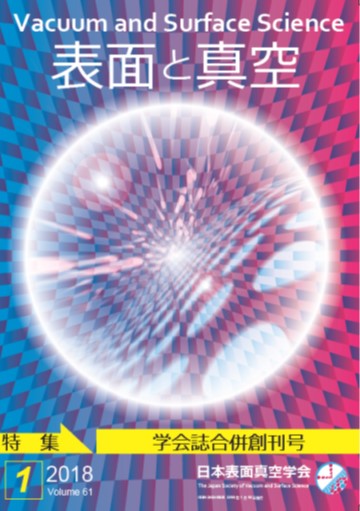Volume 65, Issue 5
Special Feature : Advanced Materials and Their Properties Investigated by Synchrotron Radiation
Displaying 1-9 of 9 articles from this issue
- |<
- <
- 1
- >
- >|
Preface
-
Article type: Preface
2022 Volume 65 Issue 5 Pages 215
Published: May 10, 2022
Released on J-STAGE: May 10, 2022
Download PDF (331K)
Special Feature : Advanced Materials and Their Properties Investigated by Synchrotron Radiation
-
Article type: Introduction
2022 Volume 65 Issue 5 Pages 216-217
Published: May 10, 2022
Released on J-STAGE: May 10, 2022
Download PDF (290K) -
Article type: Current Topics
2022 Volume 65 Issue 5 Pages 218-223
Published: May 10, 2022
Released on J-STAGE: May 10, 2022
Download PDF (3066K) -
 Article type: Current Topics
Article type: Current Topics
2022 Volume 65 Issue 5 Pages 224-229
Published: May 10, 2022
Released on J-STAGE: May 10, 2022
-
Article type: Current Topics
2022 Volume 65 Issue 5 Pages 230-235
Published: May 10, 2022
Released on J-STAGE: May 10, 2022
Download PDF (3879K) -
Article type: Current Topics
2022 Volume 65 Issue 5 Pages 236-241
Published: May 10, 2022
Released on J-STAGE: May 10, 2022
Download PDF (1577K)
Report
Conference Report
-
Article type: Report
2022 Volume 65 Issue 5 Pages 242-243
Published: May 10, 2022
Released on J-STAGE: May 10, 2022
Download PDF (1076K)
Science Café
Diversity Promotion
-
Article type: Science Café
2022 Volume 65 Issue 5 Pages 244-245
Published: May 10, 2022
Released on J-STAGE: May 10, 2022
Download PDF (566K)
News & Trends
-
Article type: News & Trends
2022 Volume 65 Issue 5 Pages 246
Published: May 10, 2022
Released on J-STAGE: May 10, 2022
Download PDF (329K)
- |<
- <
- 1
- >
- >|




